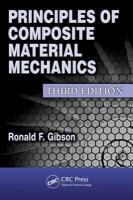Read more
"Preface The goals for the third edition are to continue to present a unique blended coverage of classical and state-of-the-art mechanics of composites technologies, while striving to incorporate the most worked-out example problems and homework problemsof any available textbook on mechanics of composite materials. A high priority has been placed on writing a textbook that is easily understood by students. Pedagogical improvements include a total of 81 worked-out example problems (25 of which are new for the third edition), 177 homework problems (25 of which are new), 388 figures (46 of which are new), a new appendix on matrix concepts and operations, new coverage of particle composites, nanocomposites, nanoenhancement of conventional fiber composites, hybrid multiscale composites, and additional coverage of finite element modeling and test methods. Although the book is written first as a textbook covering classical methods, frequent references to current stateof- the-art composites technology and research findings are included. Extensive references are provided, including many current journal articles along with classic and historical publications. I continue to be indebted to my colleagues, graduate students, and sponsors for their encouragement and support over the years. Most recently, my professional affiliations with Wayne State University (WSU) and the University of Nevada, Reno (UNR) have provided the necessary positive environments for teaching and research that made the development of this newedition possible. I have been particularly motivated by the interactions with students in my composites classes at WSU and UNR. As with the earlier editions of this book, my wife and best friend, Maryanne, continues to be my most enthusiastic supporter"--

